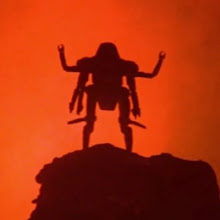Said the 2002 New York Times review of Igby:
What is it with "The Catcher in the Rye" these days? Is it just a coincidence that in a matter of months, the J. D. Salinger classic has rung two cinematic bells? (Three if you count "The Good Girl," in which Jennifer Aniston's character has an affair with a clinically depressed self-styled Holden Caulfield.) Nor should we forget the plaintively whimsical films of Wes Anderson, which flaunt a Salingeresque sense of their own rarefied sensibility.But this trend is not new. Even as far back as 1989's Field of Dreams has a connection through is source material according to the Internet Movie Database:
In the novel, the reclusive author whom Kinsella sought out was J.D. Salinger, whose novel "Catcher In The Rye" included a character named Richard Kinsella. The producers of the film adaptation were forced to create a fictional reclusive author (James Earl Jones' character, Terrence Mann), because of the threat of legal action by Salinger, who was reportedly incensed when the novel was published in 1982.
Click here for some photographs of Salinger's town, including one of his driveway.
So what is it that screenwriters, then, now, and everywhen heap worship upon Salinger? Is it because in high school, they, as the unappreciated and socially awkward writers, found solace in his works when their social oppressors were wooing cheerleaders and drinking cheap beer, activities they publicly held in disdain but secretly longed to join? Is it because Salinger captured the inarticulate social revulsion of adolescents and the maturation of those feelings of discomfort into more pronounced forms of adult awkwardness? Or is it because Salinger was cool and trendy in a way that John Grisham or other pop rubbish simply is not?
Perhaps the question is not why screenwriters or bloggers or journalists so adore Salinger. Might the inquiry best focus on why one would seek to translate that admiration into a theme or motif present in one's own work? By naming your protagonist after your own favorite protagonist, do you get to wink ever so slyly at yourself in the mirror and marvel at your own cleverness? Or are there other unforeseen rewards awaiting you, the writer of such things?





No comments:
Post a Comment